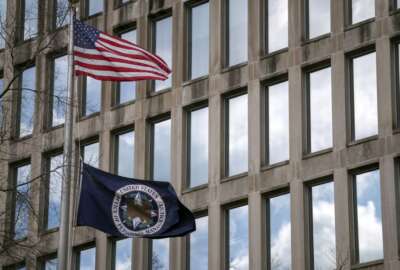Justice IG finds IWN program provides little value
The latest report on the 10-year effort to build a nationwide interoperable communications system shows law enforcement agents are still using 15-year-old radios.
The Justice Department’s decade-long program to update the nationwide law enforcement communications system continues to fall short of expectations.
DoJ’s inspector general released its latest report on the Integrated Wireless Network (IWN) program, which found little value from the hundreds of millions of dollars spent on the effort.
“[T]he department’s law enforcement components are still using old and often obsolete equipment. There is limited interoperability between the components and with other law enforcement agencies,” the IG wrote in the report.
Additionally, the Obama administration seems to be giving up on the program. It proposed to cut IWN’s funding in its 2012 budget request to Congress. Congress decided to allocate $87 million in 2012 for both updating and maintain existing law enforcement radio systems, but didn’t mention IWN specifically.
Justice started the IWN program in 1998 and has spent $356 million over the last 10 years. Initially, DoJ wanted to connect 81,000 federal law enforcement agents from three agencies — Justice, and the departments of Treasury and Homeland Security — and all 50 states through an interoperable radio network.
Justice hired General Dynamics to build the IWN system in 2007 under a deal that could have been worth anywhere from $3 billion to $30 billion over the life of the contract.
Instead, IWN never got the support it needed. The IG said the program became a victim of funding shortfalls from Congress and of poor management from the agency.
“Funding delays and reductions have affected the department’s ability to implement the nationwide system as planned by 2010,” the report stated. “As a result, the department’s law enforcement agents continue to utilize radio systems and unsecure communications equipment that are over 15 years old in the performance of their duties.”
The continuous problems caused DHS to drop out of the program in 2008 and pursue their own nationwide law enforcement network that would work with IWN should it ever be completed.
Justice did make limited progress, especially in the Washington metro region and in the Seattle/Blaine, Wash. areas under phase one of the program. The IG stated in 2009 it began implementing the network, but it still is undergoing testing and has yet to be fully deployed.
“As of August 2011, 23 cities have at least 1 federally funded interoperable channel. However, the limited interoperability achieved is grossly insufficient to adequately address the communication challenges law enforcement personnel continue to face during joint operations and in emergency situations,” the IG stated. “The Project Manager told us that there remain insignificant technical issues, such as incomplete site security assessments and inability to perform local vulnerability scans, which are still being resolved.”
In addition to the failings to create a nationwide interoperable communications network, Justice didn’t meet its contribution to a governmentwide commitment made in 1993 to cut all federal radio spectrum usage in half by 2008. IWN was supposed to help Justice meet its share of the goal. The IG found DoJ still has met the deadline set by the Commerce Department’s National Telecommunications and Information Administration.
“[T]he Department’s inability to deploy IWN nationwide has affected the Department’s ability to comply with the NTIA narrowbanding requirement and upgraded encryption standard,” the IG wrote.
The IG recommended Justice take four steps to improve IWN, including developing a detailed interoperability plan that establishes the department’s role and plan for ensuring that federal, state and local agents and first responders are able to communicate effectively.
In a written response to the IG, Lee Lofthus, the assistant attorney general for administration, said while they concur with the report’s recommendations and much of the discussion of the facts, they disagreed with certain characterizations in the report.
“It is important that the lWN project be measured against its current objectives rather than an initial — but not finalized — plan no longer being pursued for both technological and funding reasons,” Lofthus wrote. “Despite the challenges to the project noted in the report, the department has achieved significant improvements in the wireless communications capabilities delivered to our law enforcement agents.”
Lofthus also said a finalized interoperability plan is expected to be completed in the summer.
RELATED STORIES:
Justice’s network consolidation rests with its budget request
Copyright © 2025 Federal News Network. All rights reserved. This website is not intended for users located within the European Economic Area.
Jason Miller is executive editor of Federal News Network and directs news coverage on the people, policy and programs of the federal government.
Follow @jmillerWFED






